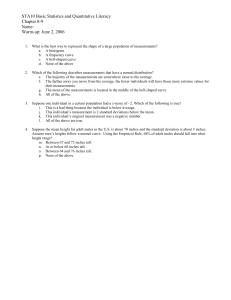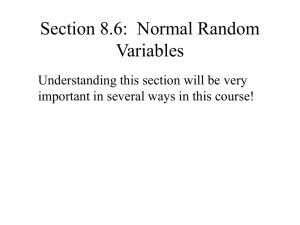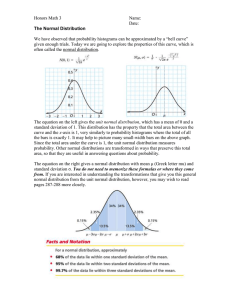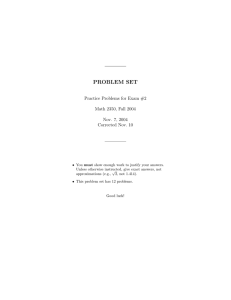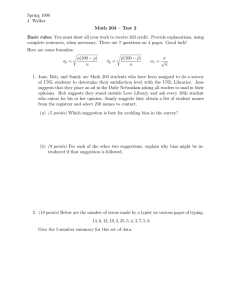Stats quiz 5 (doc)
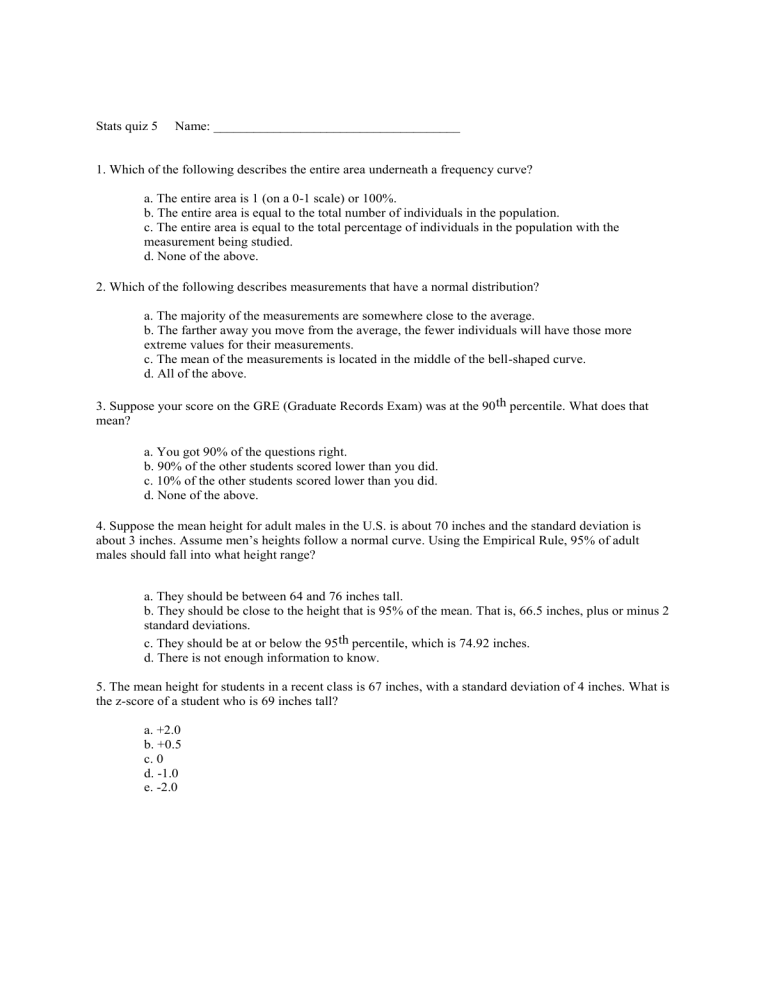
Stats quiz 5 Name: _____________________________________
1. Which of the following describes the entire area underneath a frequency curve? a. The entire area is 1 (on a 0-1 scale) or 100%. b. The entire area is equal to the total number of individuals in the population. c. The entire area is equal to the total percentage of individuals in the population with the measurement being studied. d. None of the above.
2. Which of the following describes measurements that have a normal distribution? a. The majority of the measurements are somewhere close to the average. b. The farther away you move from the average, the fewer individuals will have those more extreme values for their measurements. c. The mean of the measurements is located in the middle of the bell-shaped curve. d. All of the above.
3. Suppose your score on the GRE (Graduate Records Exam) was at the 90th percentile. What does that mean? a. You got 90% of the questions right. b. 90% of the other students scored lower than you did. c. 10% of the other students scored lower than you did. d. None of the above.
4. Suppose the mean height for adult males in the U.S. is about 70 inches and the standard deviation is about 3 inches. Assume men’s heights follow a normal curve. Using the Empirical Rule, 95% of adult males should fall into what height range? a. They should be between 64 and 76 inches tall. b. They should be close to the height that is 95% of the mean. That is, 66.5 inches, plus or minus 2 standard deviations. c. They should be at or below the 95th percentile, which is 74.92 inches. d. There is not enough information to know.
5. The mean height for students in a recent class is 67 inches, with a standard deviation of 4 inches. What is the z-score of a student who is 69 inches tall? a. +2.0 b. +0.5 c. 0 d. -1.0 e. -2.0
